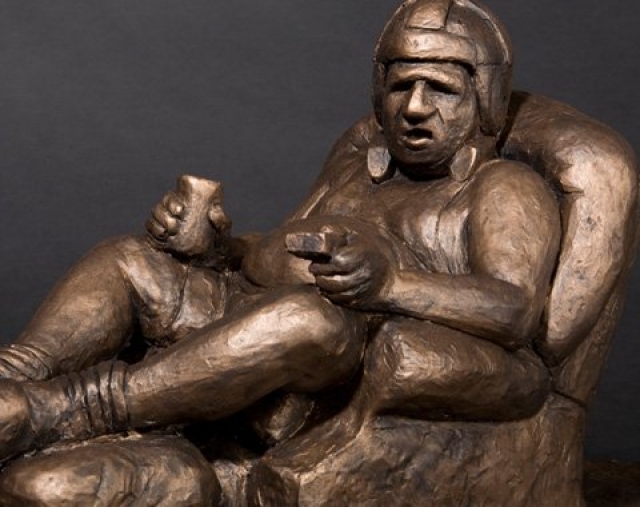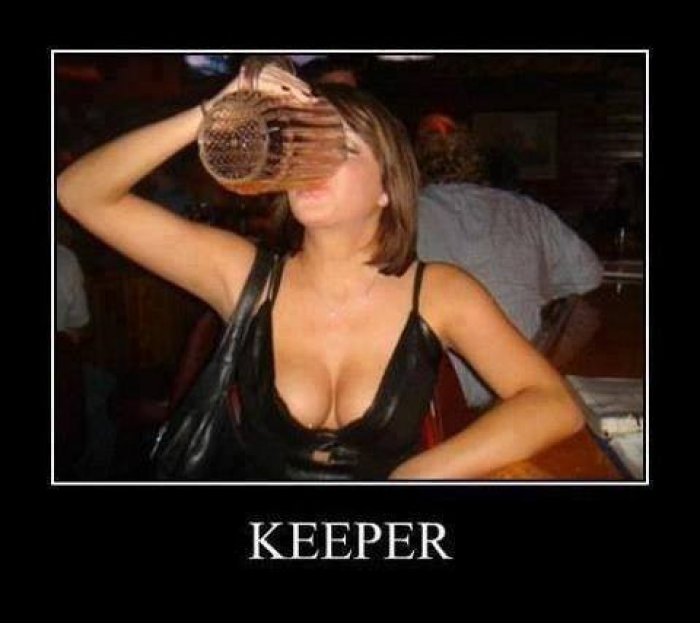 Welcome to the long overdue Rule Book update. Since we change at least one or two things each season, it makes sense to get everything back onto one document again.
Welcome to the long overdue Rule Book update. Since we change at least one or two things each season, it makes sense to get everything back onto one document again.
HISTORY:
Robioland Football was established in 1999. At that time, the league featured 8 employees at Ruby Tuesday restaurant. The following year, we expanded to 12 teams. Overall, the league has had 25 league members, after Marc Pattini entered back into the league in 2017.
TEAMS:
The league features 12 teams. We use to have three divisions, but they were eliminated in 2012.
ROSTERS:
Each team has 15 players; eight starters and 7 backups.
Each team must start 1 QB, 1 RB, 2 WR, 1 FLEX (RB/WR), 1 TE, 1 PK and 1 DST.
There are currently no restrictions on who you can keep on your bench.
DRAFT
We do a snake draft; always have, always will. The draft order is based on the previous season’s results. Last year’s worst team gets the top pick. When it comes to picks 5-12 (i.e. teams that made the playoffs), where you lost in the post-season matters first. So if you were the top team, but lost in round one, you will get the 8th pick. Whereas if you were the 8-seed and you lose in the title game, you will have pick number 11.
Also, you must draft at least one player from each position in the draft.
No auto-draft. This is completely unacceptable. Never will a computer make a pick in Robioland. For extraordinary situations you may have someone draft for you, but your wife or child better be dying in that case.
DRAFT TRADES:
You may trade draft picks for draft picks
You may not trade draft picks for players.
 KEEPERS:
KEEPERS:
You can keep up to two players.
There are two categories from where you can keep a player
– Category One (Rounds 1-7)
– Category Two (Rounds 8-15)
Each keeper can be kept for a total of three seasons (the year you drafted/picked them up, followed by two drafts)
If you trade for a player that’s been kept, his keeper status remains the same.
If a keeper is cut and you pick him up, his keeper status remains the same.
If a player went undrafted and is picked up and you want to keep him…here is what round he will go in…
– Running backs are kept in round 6
– Wide Receivers are kept in round 7
– Quarterbacks are kept in round 8
– Tight Ends are kept in round 9
– Defense/Special Teams are kept in round 10
– Kickers are kept in round 11 (although if you keep a kicker, I’ll probably kick you out of the league).
Two weeks before each draft, you must declare your keepers. If during that time a player gets injured and is suddenly declared out for the year, you may ask me to replace that player with another on your previous keeper options.
Starting in 2015, if you wish to remove a player and reestablish the pick the player was costing you, you may. You don’t even need a reason to do it.
Before the draft, you may trade a keeper(s) only for another keeper. However, if you trade for a keeper, you may not keep anyone else in that player’s category. If Colby trades me Brandon Marshall (a third round pick) and I change my mind, then I’m out of luck. I can not keep anyone else in category one. Also, if two teams trade a keeper, you must switch positions within the round. Example: If I have the third pick in round two and I trade a second round keeper to someone who has the 10th pick in that round, they inherit the third pick and I take the 8th pick.
REDSHIRT OR PRACTICE PLAYER
You may redshirt any player you draft. Yes, any player. When you redshirt a player, you must declare it prior to week one. If you keep this player on your roster all season long and never insert him into your starting lineup, you will be given an extra year of keeper eligibility.
During his redshirt year, a player’s salary will be placed at zero. Also, if you trade a player as a redshirt, as long as the other team doesn’t start him, his redshirt carries over.
LINEUPS:
All lineups must be complete. It is not acceptable to have a bye-week player in your lineup. So please don’t ask me on a Friday if you can keep your starting kicker in your lineup even though he’s on a bye-week because you don’t want to cut anyone on your bench. Although rare, every once and a blue moon, a team will “accidentally” leave a bye-week player in a starting spot. There won’t be any actual consequence for an error, however, if it becomes a trend, then that person won’t be in this league for much longer.
ADD/DROPS:
Everyone has a $100 of auction money for the season. You can bid as little as zero dollars for a player.
Bidding begins Tuesday morning and that days auction goes through that night and then starts again the next day.
If you bid the most, you get the player. If you bid the same amount as someone else, then whoever has the worst W-L record will get the player. The exception to this rule is if you put in multiple bids, once your first bid has gone through, you drop to the bottom of the wire. So for example: Let’s say Calderon is in first place and I’m in last place. I put in a bid for the Seahawks DST and we both put a bid in for the same running back. Because the Seahawks DST is my first bid (thus my priority, according to CBS), once I awarded the Seahawks DST, I will fall behind Rich in the waiver wire and he will win the running back. So really pay attention to the order you have players in the add/drop window.
INJURED RESERVE:
Since 2014, each team will have one IR spot. To place a player on IR, CBS must say that the player is on the actual injured reserve in real life or is PUP. When your player comes off the real IR/PUP, you must remove him from your IR. A player simply missing a game is not good enough to to get them on the IR.
Lastly, if a player goes on the IR his salary will go to zero and remain that way until he comes off the IR.
SUNDAY/MONDAY PICK UPS:
Because coaches in the NFL like to hid injuries and because we here at Robioland understand that people have lives outside of fantasy football, you are allowed to add/drop on Sunday. Unlike the auction days, Sunday is a free-for-all. First one to ask for a player, gets them.
Now the spirit of the rule is to allow you to pick up a player to fill in for a last second injury. However, recently, people have used it just to pick up last second defenses or just do their weekly lineup changes. To prevent this, below are the new rules for Sunday pick ups.
1. To add a player on Sunday or Monday, it will now cost you $5 of auction money. If you don’t have $5 left, then you’re out of luck.
2. You can no longer pick up a defense on Sunday. Since an entire defense can’t get hurt, there is no reason to pick one up on Sunday. Now there is one exception to this rule. Read down below.
3. You may add a player at ANYTIME on Sunday or Monday. You may add a player at anytime as long as that player has not started to play yet. The same is true for Sunday night and/or Monday night players. In fact, and this is important, you don’t find out until after the game has started that a player is out, you can still replace him with a player who hasn’t play a down yet (someone who is playing a later game).
4. Anyone player can be picked up, even if they were cut Saturday by another team, but any player picked up on Sunday must be cut on Tuesday. A Sunday pickup is just a weekly rental. If you want him again, you’ll need to bid on him
Note: All Sunday pick ups need to be out in the open. If possible, don’t text me or email me. You need to post it on the league message board or have it in a league-wide email. I want it to be transparent. If you don’t have the CBS fantasy football app for your smart phone, get it. You can access everything, including the message board.
TRADES
Any team can trade with any team. There are no restrictions. Many leagues do have restrictions to prevent dump trades. I’m trying to avoid that. So far, people have been pretty good about it in this league. Dump trades will happen when you have a keeper league and bad teams need to prepare for next year. All I ask is, be smart about it.
The trading deadline is always the Saturday before week eleven’s games.
PLAYOFFS
Eight teams make the playoffs. The seeding is based on W-L record, followed by total points as a tiebreaker. If two teams have the same record and the same amount of points scored, then the second tiebreaker is head-to-head. If the two teams faced off twice and split, whoever has the most points in those two match ups will win a third tiebreaker if needed. If they scored the same amount of points in those two games, then go fuck yourself.
Once the quarterfinals are done, we re-seed. This simply means the higher seed left in the post-season will always face the lowest seed (the same as the NFL).
Game tiebreakers: Some leagues designated points from a certain position. I think that is stupid. If two teams tie in the post-season, the higher seed will advance (your reward for having a better regular season).
SCORING
I will say that here in Robioland we have arguable the most unique scoring system in the land.
OFFENSE:
For passing, you get 2 points for every three yards a player throws for. For running or receiving, a player gets two points for every one yard rushing/receiving.
All offensive touchdowns, whether passing, rushing or receiving is 60 points. All two-point conversions, whether passing, rushing or receiving is 20 points.
As for negative points. All turnovers, whether it is interceptions or fumbles lost, is -30. All quarterback sacks are -10.
DEFENSE:
Points Against…
0 points is 300
1-8 is 275
9-17 is 250
18-24 is 225
25-31 is 200
32+ is 175
For every two yards a defense gives up, that’s -1 for that defense. Defensive/Special teams touchdowns are 40 points. Turnovers (interceptions and fumble recoveries) are 20 points. Sacks are 10 points and safeties are 20 points.
KICKING:
All field goals between 0-29 is 30 points. Field goals between 30-39 are 30 points, 40-49 are 50 points and field goals longer than 50 are 70 points.